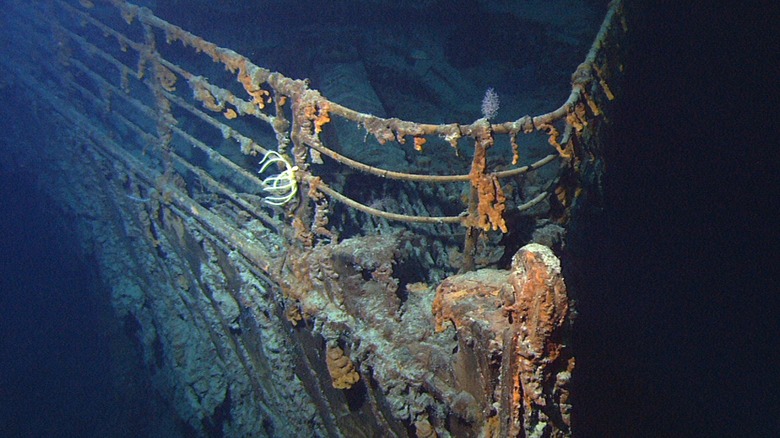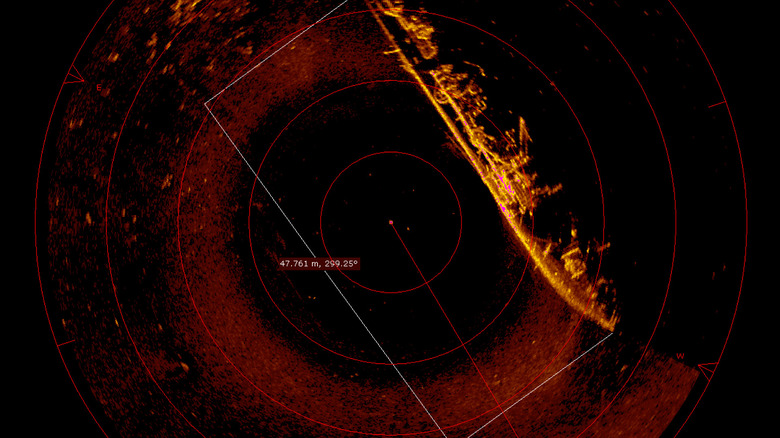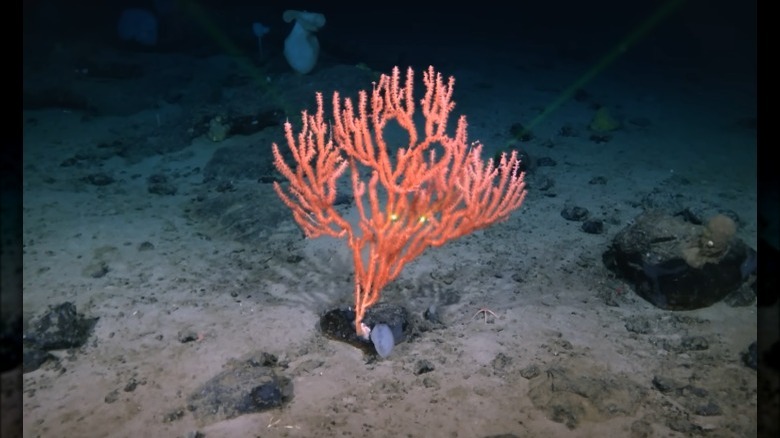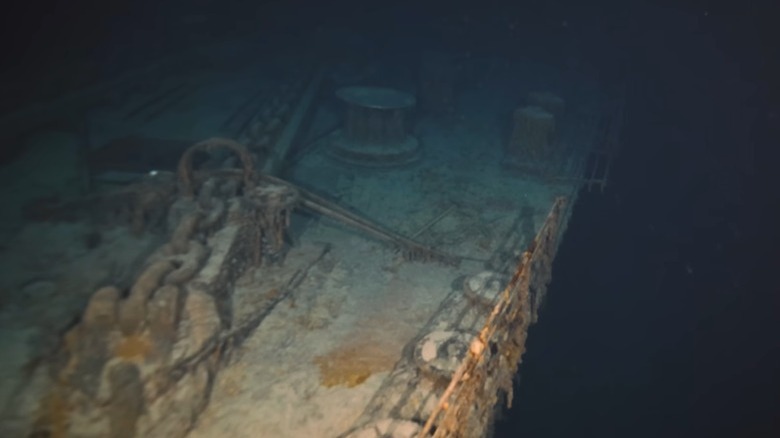Scientists Finally Know What A Mysterious Object Next To The Titanic Really Is
The Titanic shipwreck remains one of the most enduring ocean disasters to date. Archived articles from The New York Times, as well as other major media publications, detail the over-century-old wreckage of the legendary ship. Among the relics found deep in the North Atlantic Ocean included staple clothing items from the era, pocket watches, instruments, and even a menu of the crew's last meal (per All That's Interesting).
Entire museums have been established to showcase these shipwrecked items. People gather around the found artifacts in wonder (via the Maritime Museum of the Atlantic). Statista reports that the Titanic Belfast museum in Northern Ireland has captivated more than 5.3 million visitors between 2013 and 2021.
And while the story of the ship striking an iceberg still resonates with the public, scientists have actually been obsessing over something much less understood. According to HuffPost, just beside the Titanic shipwreck lies a "mystery object" that has baffled the scientific community since 1998. Recently, they finally discovered what it is.
The search started with a blip
ScienceAlert reports that underwater research director Paul-Henri Nargeolet — who has since died on the Titan submersible, which imploded on a deep-sea expedition to view the remains of the Titanic — was the first to capture the perplexing sonar blip that would go on to spark controversy for almost 25 years. He did so during one of his 30 deep-sea dives exploring Titanic's ruins and other ethereal objects nearby. When Nargeolet's team first touched down in 1998 to make the recording, the scientific community didn't know what conclusion to draw.
For the nearly two and a half decades that followed, several theories were proposed, but none solidified. So what was lying there 9,514 feet beneath the North Atlantic Ocean? Could the mysterious blip seen on the scanner denote an odd geological feature or a large and looming object poking through the murky waters? Many suspected it could even be another legendary shipwreck just waiting to be explored.
In a riveting interview reported by HuffPost, Nargeolet said, "On the sonar, this could have been any number of things including the potential of it being another shipwreck. I've been seeking the chance to explore this large object that appeared on sonar so long ago."
It was a never-before-seen volcanic underwater ecosystem
During underwater exploration, it seems that by digging up the past, previously unknown life can be revealed. In this case, according to the Daily Mail, the blip seems to have been caused by a thriving, newly-discovered ocean environment complete with a teeming ecosystem. At around 9,514 feet beneath the North Atlantic Ocean lie this natural reef, ripe with diversity and inclusive of multiple maritime creatures.
In a press release, OceanGate Expeditions chief scientist Dr. Steve W. Ross spoke on the discovery (per HuffPost): "We are astonished at the diversity and density of the sponges, bamboo corals, other cold-water corals, squat lobsters and fishes that are thriving at 2900 meters deep in the North Atlantic Ocean."
This underwater ecosystem is located just 25 miles from the Titanic shipwreck, which became a kind of artificial reef (via HuffPost). Now that this new volcanic formation has been unearthed, questions are erupting in the world of science. How does this natural reef compare to the life forms swimming around the Titanic's wreckage? How are the sponges and corals surviving? Are there any new species awaiting in the reef? Science Alert reports that these are some of the top questions researchers want to get to the bottom of, and they have already set out to do just that.
What does this all have to do with climate change?
When you think about climate change, you might not automatically conjure up imagery from sunken shipwrecks like the Titanic. However, Science Alert reports that this new discovery could clue scientists in on how delicate ecosystems, like the one they just recently identified near Titanic, adapt to the warming waters and rising seas.
According to Daily Mail, it was July 23, 2022, when Paul-Henri Nargeolet led his team of eager researchers 9,514 feet deep to discover the flourishing natural reef, but this is all just the tip of the proverbial iceberg. Now that the world knows the reef exists, the information can be used to learn more about survival in deep-sea environments. In a recent interview reported by Ocean Gate Expeditions, marine biologist Murray Roberts said, "We need to share this information with the scientific community and policy makers to be sure these vulnerable ecosystems get the proper attention and protection they deserve."



